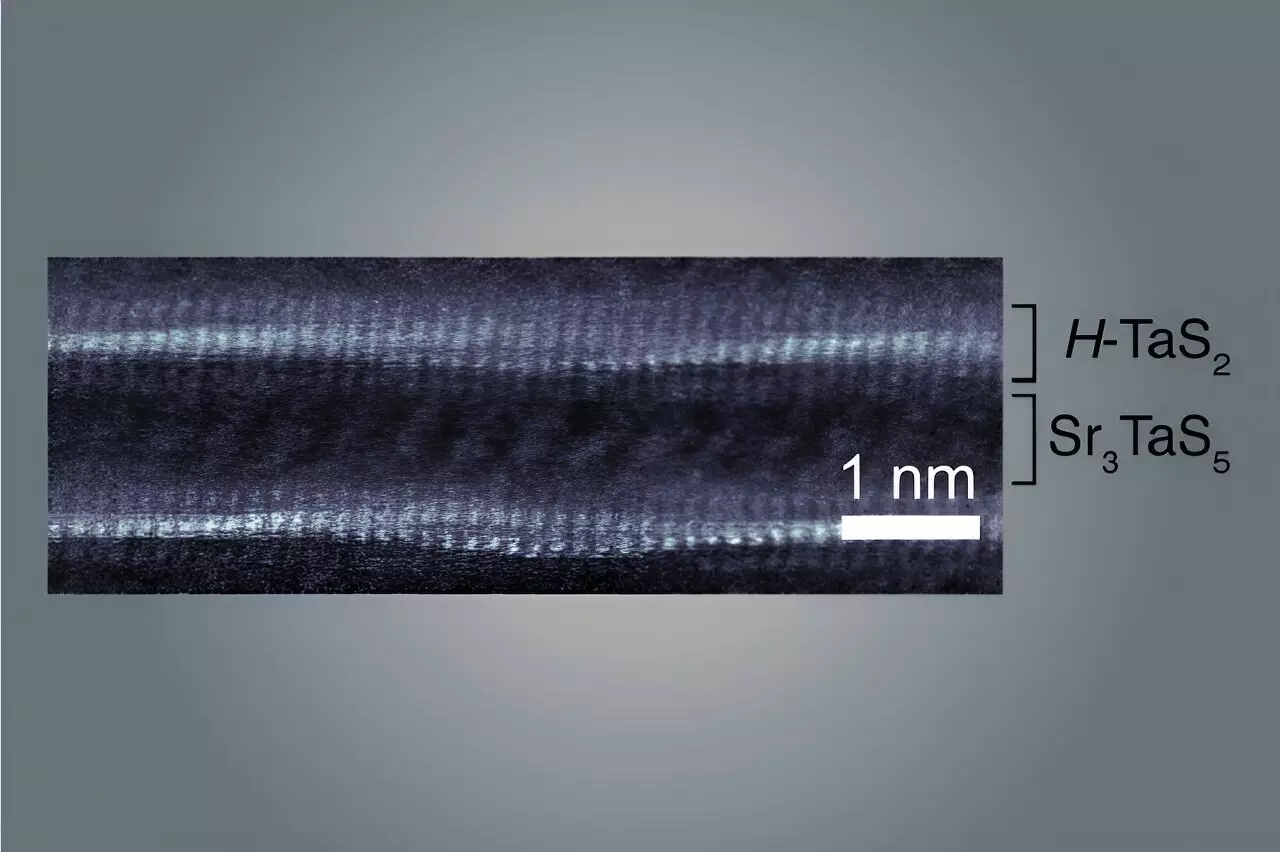In a remarkable convergence of materials science and quantum physics, researchers at the Massachusetts Institute of Technology (MIT) have successfully synthesized a novel material that exhibits extraordinary superconducting and metallic properties. This innovative material is characterized by its unique wavy atomic structure, which is just nanometers thick, yet can be handled in macroscopic samples. This development not only advances the field of condensed matter physics but also opens up new possibilities for understanding quantum behavior at a larger scale.
The breakthrough, detailed in a recent publication in *Nature*, stems from a process of rational design—the meticulous crafting of materials based on deep insights into their chemistry and physics. Unlike traditional approaches that often yield unpredictable results, the MIT team has established a robust methodology for creating new materials with desired characteristics. By understanding the atomic foundations of their outputs, the researchers express confidence in their ability to generate further materials with similarly unusual properties.
What sets this new wavy material apart within the field is its unparalleled atomic uniformity across thousands of layers. As noted by senior investigator Joseph Checkelsky, this level of uniformity not only enhances the crystal’s structural integrity but also represents a departure from conventional crystalline forms, promising the emergence of novel physical properties.
Two-dimensional materials have become a focal point of modern physics due to their ability to exhibit exotic material properties. These materials, often just a few atoms thick, can be engineered to enhance or disrupt electron flow, magnetic properties, or superconductivity through manipulative techniques such as twisting layers. However, the assembly and study of these materials come with inherent challenges linked to their microscopic scale.
As such, Checkelsky’s team has pioneered a contrasting approach. Their methodology involves the combination of raw materials at elevated temperatures within a furnace, allowing for natural crystallization processes driven by chemical reactions. This method not only simplifies the fabrication of these materials but also enhances their scalability and applicability in practical environments.
At the heart of this groundbreaking research is the formation of a wavy atomic arrangement, likened to a layer cake composed of alternating metallic and spacer layers. The metallic layer, composed of tantalum and sulfur, buckles to accommodate the “spacer” layer, which includes strontium. This misalignment creates the wave-like pattern, resulting in unique electronic properties. The analogy of a legal sheet of paper placed over a standard printer page illustrates the concept—some parts of the upper layer must deform to fit around the lower one.
This structural innovation is key. It has been discovered that the indented troughs of the atomic waves allow electrons to flow with ease, a phenomenon that significantly alters their motion directionally. As Aravind Devarakonda, the leading author of the study, explains, by inducing this “waviness,” the researchers have purposefully engineered a material that directs electron movement, drastically altering its metallic characteristics.
One of the most intriguing properties of the new material is its superconductivity, where electrons can move through the structure without resistance at certain temperatures. This behavior is intricately tied to the wave structure since the electrons’ interaction with the material’s waviness enhances their flow in specific pathways. This relationship not only emphasizes the significance of the atomic arrangement but also highlights the intricate nature of quantum mechanics that governs these interactions.
As Devarakonda articulates, the wavy structure imprints unique characteristics onto the superconductivity, resulting in a variable strength imbued in different areas of the material. This form of behavior has significant implications for potential applications, shedding light on its multifaceted utility in the realms of electronics and energy storage.
This pioneering research represents not only a scientific achievement but also a call to exploration within the realm of material science. The authors of the paper, including graduate and postdoctoral researchers, illustrate a collaborative effort that is characteristic of contemporary scientific inquiry—a multidisciplinary approach that leverages diverse expertise to push the boundaries of knowledge.
The creation of this newly designed material with its unique wavy atomic configuration marks a significant milestone in the study of superconductors and metallic systems. The ability to manipulate such materials at macroscopic scales while maintaining their quantum properties poses an exhilarating prospect for future technological applications. As researchers continue to explore this uncharted territory, it is clear that the flags they have planted herald a promising new chapter in the saga of materials science.


Leave a Reply